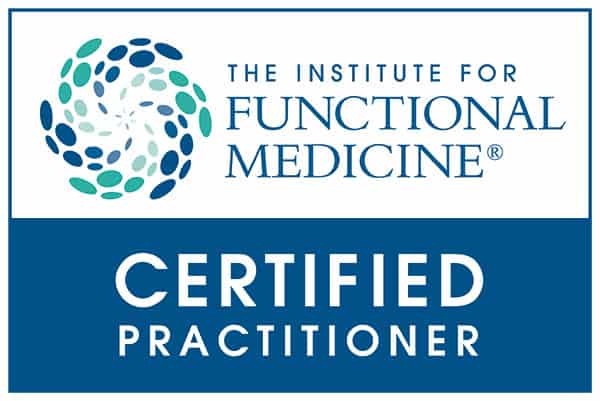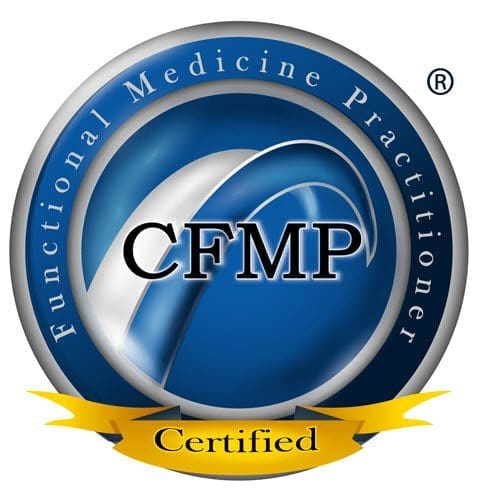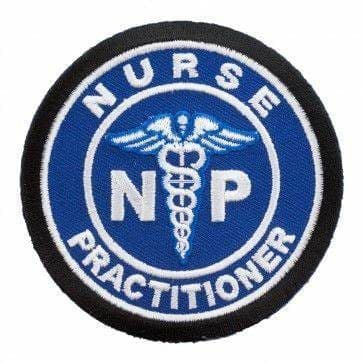Explore the connection between musculoskeletal ligaments and automobile accidents, focusing on preventive and rehabilitative strategies.
Contents
Introduction
Motor vehicle accidents (MVAs) are usually the leading cause of musculoskeletal injuries worldwide, with ligaments in the upper body quadrant—neck, shoulders, and elbows—often bearing the brunt of the impact. These tough, fibrous bands stabilize joints, but when stretched or torn in a crash, they can trigger chronic pain, reduced mobility, and long-term disability. Imagine ligaments as the body’s bungee cords: stretchy but with limits. When an MVA snaps them, it’s less a thrill ride and more a grim tale of aches and legal battles, worthy of a Wednesday Addams smirk.
This guide examines the clinical rationale behind ligamentous injuries resulting from motor vehicle accidents (MVAs), with a focus on the upper body. We’ll break down the anatomy and physiology of ligaments, how accidents cause these injuries, and their role in neck and back pain. We’ll also spotlight Dr. Alexander Jimenez, a distinguished El Paso practitioner whose expertise in chiropractic care and personal injury cases helps victims recover and navigate the legal challenges they face. With a touch of dark humor to keep things bearable, let’s dive into this serious topic.
Understanding Ligaments: Structure, Function, and Physiology
Ligaments within the musculoskeletal system are fibrous connective tissues that link bones, ensuring joint stability and guiding movement. Composed primarily of collagen fibers, along with elastin and proteoglycans, they strike a balance between strength and flexibility. In the upper body, key ligaments include:
- Cervical Spine Ligaments:
- Anterior Longitudinal Ligament (ALL): Runs along the front of vertebral bodies, preventing hyperextension.
- Posterior Longitudinal Ligament (PLL): Lies behind vertebral bodies, limiting hyperflexion.
- Ligamentum Flavum: Connects adjacent vertebrae laminae, maintaining posture.
- Interspinous Ligaments: Link spinous processes, restricting flexion.
- Supraspinous Ligament: Runs along the tips of the spinous processes, also limiting flexion.
- Shoulder Ligaments:
- Coracohumeral Ligament: Supports the glenohumeral joint’s superior aspect.
- Glenohumeral Ligaments: Three bands reinforce the joint capsule anteriorly.
- Acromioclavicular Ligament: Stabilizes the AC joint.
- Coracoacromial Ligament: Bands that form part of the coracoacromial arch, protecting the humeral head.
- Elbow Ligaments:
- Ulnar Collateral Ligament (UCL): Prevents valgus stress (abduction).
- Radial Collateral Ligament (RCL): Prevents varus stress (adduction).
- Annular Ligament: Secures the radius head against the ulna.
Ligaments function to limit excessive joint motion, guide movement, and aid proprioception (body position awareness). When injured, they cause instability, pain, and inflammation, especially in MVAs where sudden forces exceed their tensile strength.
References:
- American Academy of Orthopaedic Surgeons. (2018). Repetitive Motion Disorders of the Upper Extremity. Rosemont, IL: Author.
- Buckwalter, J. A. (1995). Activity vs. rest in the treatment of bone, soft tissue and joint injuries. Iowa Orthopaedic Journal, 15, 29-42.
Ligamentous Injuries from Motor Vehicle Accidents
MVAs generate high-energy impacts that can stretch or tear ligaments, particularly in the upper body. Common injuries include:
- Whiplash-Associated Disorders (WAD):
- Whiplash occurs in rear-end collisions when the head jerks forward and backward, straining or tearing cervical ligaments, such as the anterior longitudinal ligament (ALL) and posterior longitudinal ligament (PLL). Picture your neck as a ragdoll in a haunted carnival ride—except the aftermath is pain, not laughter.
- Symptoms include neck pain, stiffness, and reduced range of motion.
- Shoulder Injuries:
- Shoulder ligaments, such as those in the acromioclavicular or glenohumeral joints, can sprain when arms brace against impact or from direct trauma.
- These injuries cause pain, swelling, and impaired mobility in the arm.
- Elbow and Wrist Injuries:
- Bracing during a crash can stress elbow ligaments (UCL, RCL) or wrist ligaments, leading to sprains or instability.
- Symptoms include tenderness and difficulty gripping.
Injury severity ranges from mild sprains (Grade 1) to partial tears (Grade 2) or complete tears (Grade 3), each requiring a tailored treatment approach.
Mechanism of Injury:
The biomechanics of MVAs explain these injuries:
- Rear-End Collisions: Cause whiplash via rapid neck extension and flexion.
- Front-End Collisions: Lead to hyperflexion, which stresses the posterior ligaments.
- Side-Impact Collisions: Induce lateral flexion, asymmetrically straining ligaments.
- Rollover Accidents: Involve complex movements affecting multiple ligaments.
Factors such as vehicle speed, seatbelt use, headrest position, and occupant posture all influence injury severity.
References:
- Applied Radiology. (2018, January 18). RSNA 2017: Understanding types of injuries caused by motor vehicle components (Applied Radiology).
- Bryant & Peterson. (2021, October 26). Causes of Muscle Pain After Car Accidents | What to Do Next (Bryant PSC).
Clinical Rationale and Musculoskeletal Consequences
The clinical rationale for ligamentous injuries in motor vehicle accidents (MVAs) hinges on biomechanics. Rapid acceleration-deceleration forces exceed the ligaments’ tensile strength, causing micro tears or complete ruptures. The neck’s vulnerability—due to its mobility and the head’s weight—makes it prone to whiplash, while shoulder and elbow ligaments face stress from bracing or impact.
Musculoskeletal Consequences:
- Neck Pain (Cervicalgia): Damaged cervical ligaments and muscles cause acute pain, which may become chronic without treatment. Whiplash can also trigger headaches or radiating pain.
- Back Pain (Lumbago): Forces transmitted through the spine can strain upper back ligaments, contributing to discomfort.
- Reduced Range of Motion: Ligament instability prompts compensatory muscle tension, which limits movement and fosters further dysfunction.
- Chronic Pain Syndromes: Untreated injuries can lead to persistent pain, negatively impacting quality of life.
Diagnosis:
- Physical Examination: Assesses tenderness, range of motion, and joint stability.
- Imaging:
- X-rays rule out fractures.
- MRI visualizes ligament tears.
- CT scans detail bony structures.
- Functional Tests: Assess the impact of daily activities.
References:
- Practical Pain Management. (2012, October 31). Whiplash Injuries in Motor Vehicle Accidents (Practical Pain Management).
- BMC Musculoskeletal Disorders. (2020, June 9). Prevalence of ligamentous knee injuries in pedestrian versus motor vehicle accidents (BMC Musculoskeletal Disorders).
From Injury to Recovery- Video
Dr. Alexander Jimenez: Expert in Musculoskeletal Injury Treatment
Dr. Alexander Jimenez, DC, APRN, FNP-BC, is a leading practitioner in El Paso, specializing in musculoskeletal injuries related to motor vehicle accidents (MVAs). With over 30 years of experience, he employs a multidisciplinary treatment approach that combines chiropractic care, physical therapy, and functional medicine. His methods include:
- Chiropractic Adjustments: Restore spinal and joint alignment.
- Physical Therapy: Strengthen muscles and improve flexibility.
- Acupuncture/Electro-Acupuncture: Reduce pain and inflammation.
- Functional Medicine: Addressing Underlying Health Factors.
- Nutritional Support: Promote tissue repair.
Advanced Diagnostics:
Dr. Jimenez likely uses MRI, CT, and other imaging to pinpoint ligament damage, ensuring accurate treatment plans. His dual licensure as a chiropractor and nurse practitioner allows a holistic perspective, integrating medical and chiropractic care.
Legal Liaison:
In personal injury cases, Dr. Jimenez provides detailed medical reports and expert testimony, linking injuries to motor vehicle accidents (MVAs) and establishing causation. This documentation is crucial for legal claims, ensuring that MVA victims receive compensation for medical expenses, lost wages, and pain and suffering.
References:
- El Paso Back Clinic. (n.d.). Home (El Paso Back Clinic).
- Jimenez, A. (n.d.). Dr. Alex Jimenez (LinkedIn).
Personal Injury Cases in El Paso
El Paso sees frequent personal injury cases from MVAs, with ligamentous injuries impacting victims’ lives. Dr. Jimenez’s expertise is invaluable, offering:
- Thorough medical evaluations to document injuries.
- Treatment plans recognized by legal professionals.
- Coordination between medical care and legal proceedings.
His work ensures no injury is overlooked, strengthening compensation claims while prioritizing recovery.
References:
- HG.org. (n.d.). Dealing with Ligament Injuries after a Car Accident (HG.org).
Prevention and Safety Measures
Reducing MVA-related ligament injuries involves:
- Seatbelts: Restrain the body, minimizing impact forces.
- Headrest Adjustment: Support your head to reduce the risk of whiplash.
- Avoiding Distractions: Prevent accidents by keeping your focus on driving.
- Safe Speeds: Lower speeds reduce injury severity.
- Vehicle Safety Features: Airbags and crumple zones mitigate harm.
Public education on these measures can lower MVA incidence and severity.
Importance of Early Intervention
Prompt treatment after an MVA:
- Prevents Chronic Pain: Early care reduces long-term issues.
- Reduces Inflammation: Speeds healing.
- Restores Function: Prevents compensatory movement patterns.
- Supports Legal Claims: Timely medical records link injuries to the accident, providing crucial evidence.
Consulting specialists, such as Dr. Jimenez, soon after a motor vehicle accident (MVA) can enhance recovery and legal outcomes.
Patient Testimonials
Patients often praise Dr. Jimenez’s care. One individual with post-MVA neck pain reported significant relief after chiropractic adjustments and therapy. Another with shoulder ligament damage regained mobility through acupuncture and exercises. These stories highlight his effective, patient-centered approach.
| Injury Type | Treatment | Outcome |
|---|---|---|
| Whiplash (Neck) | Chiropractic, Physical Therapy | Reduced pain, restored motion |
| Shoulder Sprain | Acupuncture, Exercises | Full mobility regained |
Conclusion
Ligamentous injuries from MVAs are a serious concern, potentially causing chronic neck and back pain. Understanding their clinical basis—biomechanical stress on ligaments—and seeking expert care is crucial for recovery. Dr. Alexander Jimenez’s multidisciplinary approach, which combines advanced diagnostics and holistic treatments, offers hope for MVA victims in El Paso. His role in personal injury cases further ensures patients receive both medical and legal support.
Disclaimer: This guide is for informational and academic purposes only and not a substitute for professional medical advice. Please consult with qualified healthcare providers for diagnosis and treatment.
Professional Scope of Practice *
The information on "Musculoskeletal Ligaments, Automobile Accidents, and Treatment" is not intended to replace a one-on-one relationship with a qualified health care professional or licensed physician and is not medical advice. We encourage you to make healthcare decisions based on your research and partnership with a qualified healthcare professional.
Blog Information & Scope Discussions
Welcome to the wellness blog of El Paso Back Clinic, where Dr. Alex Jimenez, DC, FNP-C, a board-certified Family Practice Nurse Practitioner (FNP-C) and Chiropractor (DC), presents insights on how our team is dedicated to holistic healing and personalized care. Our practice aligns with evidence-based treatment protocols inspired by integrative medicine principles, similar to those found on dralexjimenez.com, focusing on restoring health naturally for patients of all ages.
Our areas of chiropractic practice include Wellness & Nutrition, Chronic Pain, Personal Injury, Auto Accident Care, Work Injuries, Back Injury, Low Back Pain, Neck Pain, Migraine Headaches, Sports Injuries, Severe Sciatica, Scoliosis, Complex Herniated Discs, Fibromyalgia, Chronic Pain, Complex Injuries, Stress Management, Functional Medicine Treatments, and in-scope care protocols.
Our information scope is limited to chiropractic, musculoskeletal, physical medicine, wellness, contributing etiological viscerosomatic disturbances within clinical presentations, associated somato-visceral reflex clinical dynamics, subluxation complexes, sensitive health issues, and functional medicine articles, topics, and discussions.
We provide and present clinical collaboration with specialists from various disciplines. Each specialist is governed by their professional scope of practice and their jurisdiction of licensure. We use functional health & wellness protocols to treat and support care for the injuries or disorders of the musculoskeletal system.
Our videos, posts, topics, subjects, and insights cover clinical matters, issues, and topics that relate to and directly or indirectly support our clinical scope of practice.*
Our office has reasonably attempted to provide supportive citations and has identified the relevant research studies or studies supporting our posts. We provide copies of supporting research studies available to regulatory boards and the public upon request.
We understand that we cover matters that require an additional explanation of how they may assist in a particular care plan or treatment protocol; therefore, to discuss the subject matter above further, please feel free to ask Dr. Alex Jimenez, DC, APRN, FNP-BC, or contact us at 915-850-0900.
We are here to help you and your family.
Blessings
Dr. Alex Jimenez, DC, MSACP, APRN, FNP-BC*, CCST, IFMCP, CFMP, ATN
email: coach@elpasofunctionalmedicine.com
Licensed as a Doctor of Chiropractic (DC) in Texas & New Mexico*
Texas DC License # TX5807
New Mexico DC License # NM-DC2182
Licensed as a Registered Nurse (RN*) in Texas & Multistate
Texas RN License # 1191402
ANCC FNP-BC: Board Certified Nurse Practitioner*
Compact Status: Multi-State License: Authorized to Practice in 40 States*
Graduate with Honors: ICHS: MSN-FNP (Family Nurse Practitioner Program)
Degree Granted. Master's in Family Practice MSN Diploma (Cum Laude)
Dr. Alex Jimenez, DC, APRN, FNP-BC*, CFMP, IFMCP, ATN, CCST
My Digital Business Card








